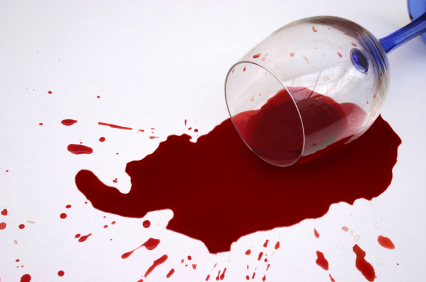Wine and the Spillover Effect
Would wine thought to be from California taste better than wine from North Dakota, even if it was poured from the same bottle? It’s no surprise that the answer is “yes” – in Preschool Branding we described how even young children say branded food tastes better than identical unbranded items. For wine, California is a better brand than North Dakota. That’s just the beginning, though. A post at the Box Wines blog, Wine Label Makes Food Taste Better, describes research that shows the apparent origin of the wine affects the perception of a restaurant’s food and even the probability that the customer will return.
The experiment, conducted by Cornell professors Brian Wansink and Collin Payne, was fairly simple. A group of diners in an Illinois restaurant were served a free glass of Cabernet Sauvignon with the same fixed-price French dinner. All were told the wine came from Noah’s Winery (a non-existent brand), but half were told the origin was California and the other half North Dakota. In fact, all of the wine was “Two Buck Chuck,” a very inexpensive but brisk-selling wine from Charles Shaw Wines. Predictably, the “California” wine was rated as being better than the “North Dakota” wine. Here’s the interesting part, though: the diners who received the free glass of California wine also rated the food higher, ate 11% more food, and were more likely to make a return reservation.
Lest one think the result a fluke, another experiment tested MBA students at a wine and cheese reception in a similar way. At that event, the subjects receiving the California wine rated the wine 85% higher and the cheese 50% higher. (From Fine as North Dakota wine.)
The simple message is that it sucks to be a North Dakota winery – even if you produce wine every bit as good as California or France, it will still taste worse to those who drink it. In fact, as little as one glass of the stuff will cast a pall over their entire dining experience. Ouch! (In fairness to North Dakota, the same results would likely have been obtained for any number of U.S. states or other countries not known for their superb wines.)
The more interesting aspect of the research, though, is the demonstrated spillover effect. In each case, the presumed characteristics of the wine affected the perception of the food; despite both wine and food being identical, a wine thought to be inferior made the food taste worse and the customer less likely to return.
This demonstrates the power of small variations in the customer experience to have unpredictable effects on satisfaction and sales. One wonders how the results might have varied under different experimental conditions:
- The server introduced the North Dakota wine with the addition, “It’s won several gold medals in European competitions, and received a 92 rating from Wine Spectator.”
- Rather than introducing different states of origin, the server uncorked a bottle for some diners and twisted off a screw cap for others.
- The server didn’t mention the origin, but highly praised the wine for some diners while simply pouring it for others.
- Some diners received a free glass of wine, while others didn’t (but couldn’t actually see they were getting short-changed).
It wouldn’t surprise me if all of these variations had some kind of effect on the perception of the food and the restaurant. Managers of restaurants and other kinds of retail environments need to realize that tiny things done differently can have a big impact. I can certainly imagine a restaurant operator reading about this study and thinking, “I’m giving the customers a free glass of wine, and they are complaining about where it’s from?” In fact, they aren’t saying a word, but their future actions tell the tale.
I’ve noticed that at the popular Olive Garden restaurant chain, servers often begin the meal with a small sample of Italian wine. This small taste doesn’t have the impact of providing a free glass of wine as was done in the Cornell experiment, but it sounds like good business in the context of their research results. I’d always assumed that the purpose of this sampling practice was to sell more wine, which it probably does. In addition, though, might not offering even a taste of Italian wine (an inexpensive house wine, but possessing the aura of its Italian origin) have a positive effect on the perception of the food and ambiance? It’s no doubt a bit challenging for a big U.S. restaurant chain to persuade customers that it’s delivering an authentic Italian taste experience, and I think a bit of Italy from the wine might just rub off on the food.
Getting past wines, what other little details might affect the customer experience? Would Starbucks coffee make dessert taste better? Would quoting positive reviews and citing awards on a restaurant menu subconsciously convince people that their food tasted better? In a clothing store, might a very visible display of expensive designer brand clothing improve the perceived quality of nearby private label items? If something as trivial as the state of origin of a free glass of wine can color an entire dining experience, it’s clear there are no details too small to be ignored when creating a customer experience.

